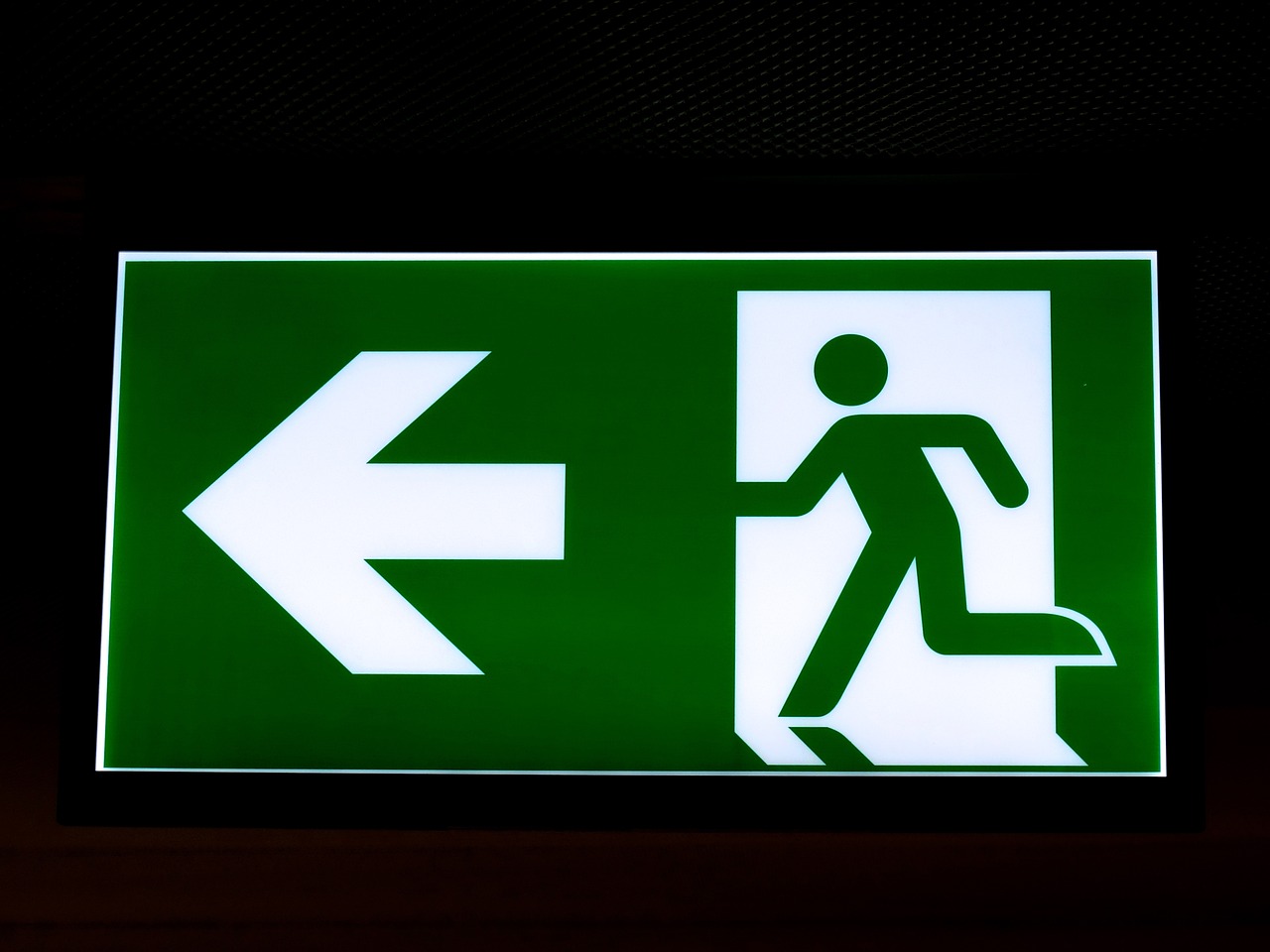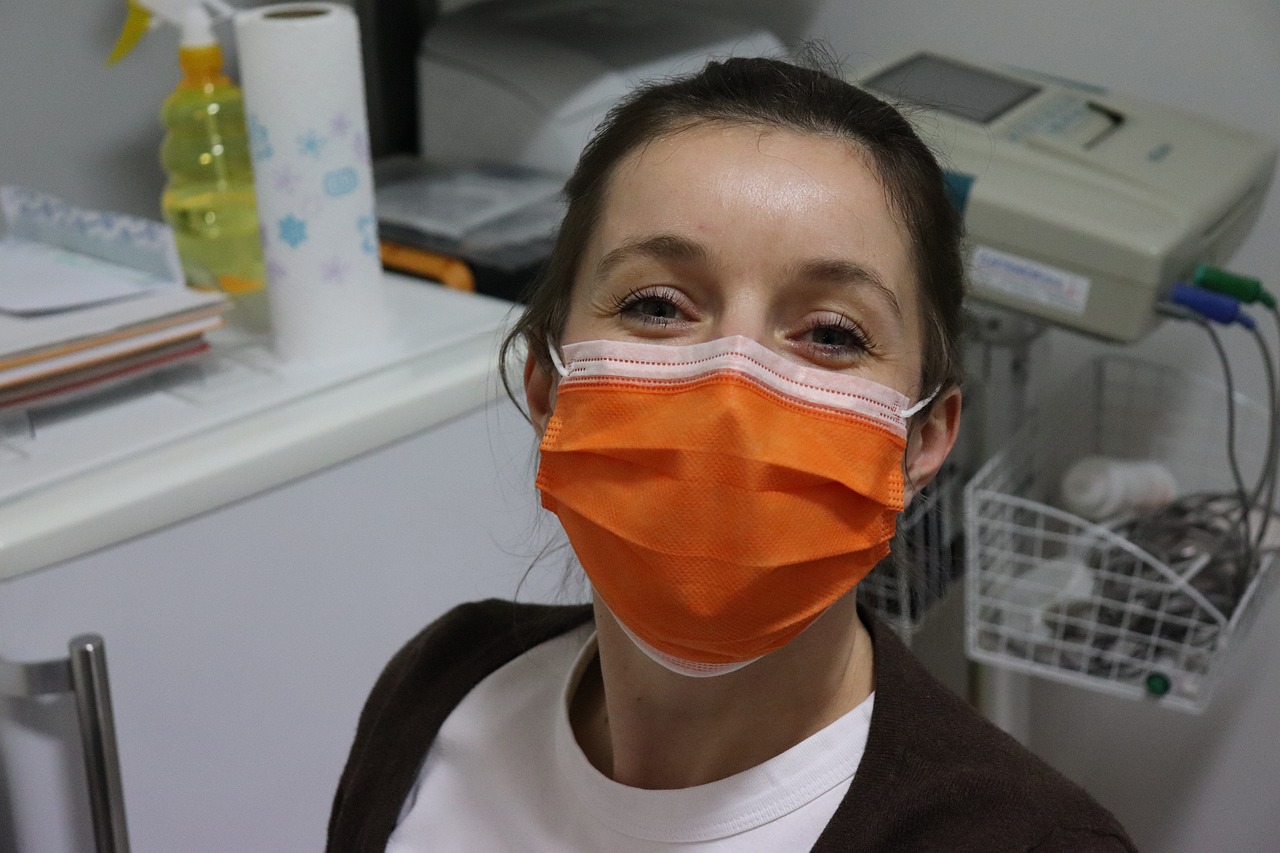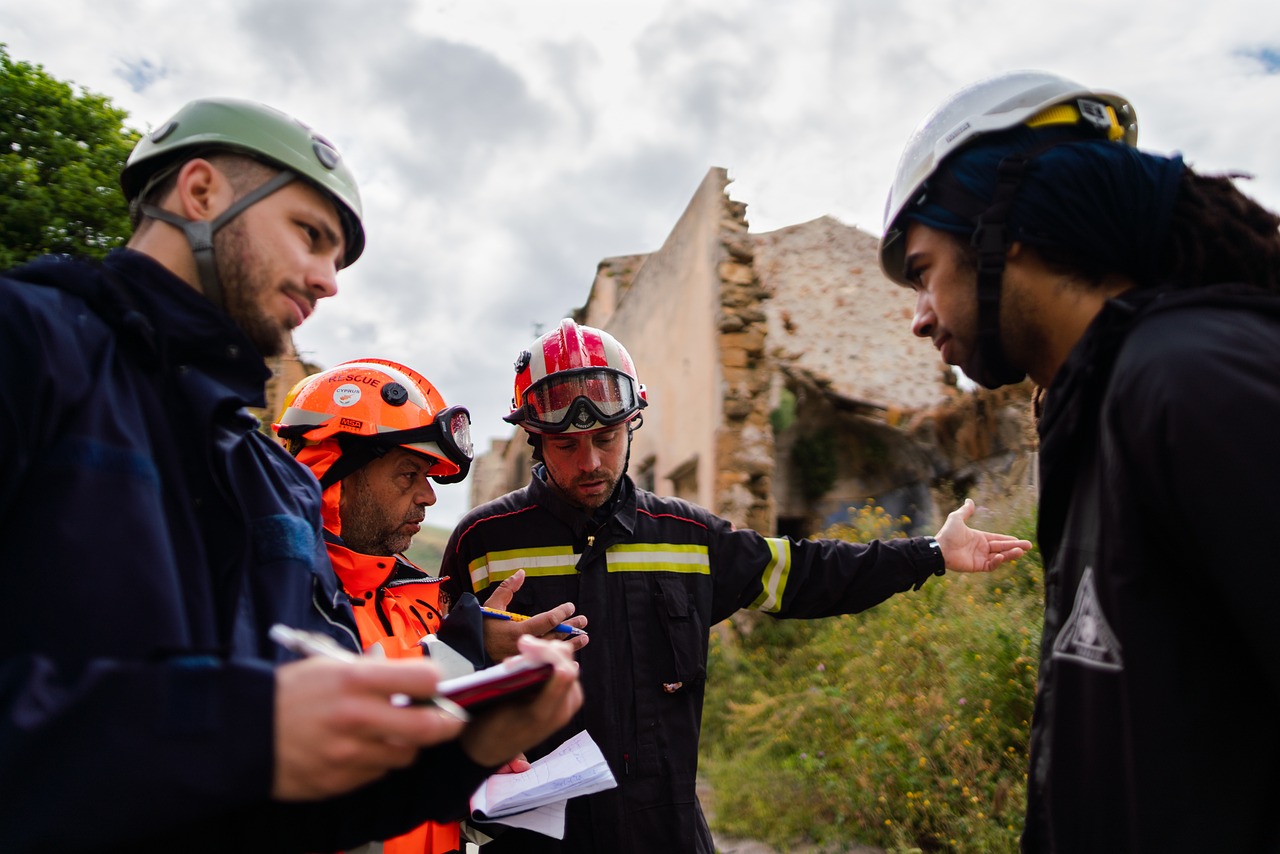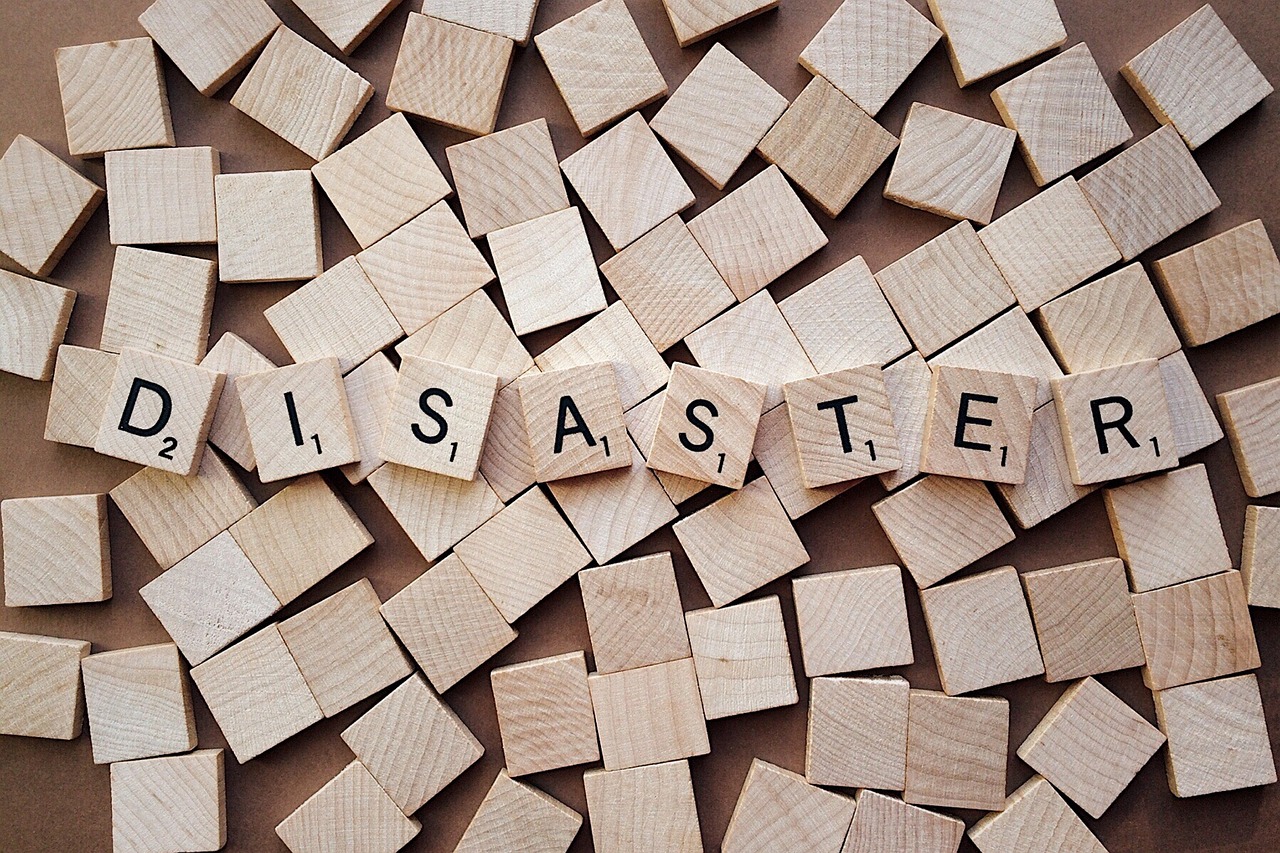Nursing in Disaster Situations – What You Need to Know
Nursing in disaster situations is an incredibly demanding yet rewarding field that requires a unique set of skills and knowledge. Imagine being thrust into a chaotic environment where every second counts, and the stakes are higher than ever. Nurses are often the frontline warriors in such scenarios, tasked with not only providing immediate medical care but also ensuring that patients feel safe and supported amidst the turmoil. This article explores the essential knowledge and skills required for nurses to effectively respond during disaster situations, including emergency preparedness, triage, and patient care in crisis environments.
Nurses play a critical role in disaster response, providing immediate care, support, and coordination of services. They are often the first point of contact for patients in distress, and their ability to assess situations quickly can mean the difference between life and death. Understanding their responsibilities in such situations is vital for effective healthcare delivery during crises. Nurses must be prepared to work in collaboration with other healthcare professionals, emergency responders, and community organizations to ensure a cohesive response. Their expertise extends beyond medical care to include emotional support, education, and advocacy for vulnerable populations.
Preparation is key in disaster scenarios. Nurses must engage in ongoing training and education to be ready for any situation that may arise. This includes familiarizing themselves with emergency protocols, participating in drills, and understanding the resources available to them. A well-prepared nurse can help to mitigate the chaos that often accompanies disasters. The importance of planning cannot be overstated; it’s like having a roadmap in a stormy sea. Without it, the chances of getting lost increase dramatically.
Triage is essential in prioritizing patient care during disasters. In these high-pressure environments, nurses must quickly assess patients' needs and allocate limited resources effectively. Think of triage as a sorting process, where nurses must determine who needs immediate attention and who can wait. This skill requires not only clinical knowledge but also the ability to remain calm and focused under pressure.
Nurses must understand various triage categories to classify patients accurately. The categories typically include:
- Immediate (Red): Patients requiring urgent care.
- Delayed (Yellow): Patients who can wait for treatment.
- Minor (Green): Patients with non-life-threatening injuries.
- Deceased (Black): Patients who are beyond help.
This classification helps nurses make informed decisions that can save lives. Each category has implications for patient care decisions, making it crucial for nurses to be well-versed in these distinctions.
Clear communication is crucial during triage. In high-pressure situations, nurses must convey critical information quickly and accurately. This can involve using simple language, employing visual aids, or utilizing technology to share information efficiently. The ability to communicate effectively can significantly impact patient outcomes and the overall efficiency of the healthcare response.
Providing care in disaster settings presents unique challenges. The chaotic environment can lead to increased anxiety for both patients and healthcare providers. Best practices for maintaining patient safety include establishing a safe area, ensuring proper sanitation, and managing resources judiciously. Nurses must also deliver compassionate care, recognizing that emotional support is just as important as physical treatment. In many ways, a nurse's presence can be a beacon of hope in the darkest of times.
Disasters can have significant psychological impacts. Nurses are often in a position to provide psychological first aid, which involves offering support and helping individuals cope with their trauma. This aspect of care is essential, as mental health can be just as critical as physical health during crises. Nurses can facilitate access to mental health resources and provide a listening ear for those affected.
Recognizing the signs of trauma is essential for effective intervention. Common symptoms may include anxiety, agitation, and withdrawal. Nurses must be trained to identify these signs and respond appropriately, ensuring that patients receive the support they need. It’s like being a detective, piecing together clues to understand a person’s emotional state.
Nursing in disaster situations can be emotionally taxing. It’s crucial for nurses to have access to support systems that ensure their well-being. This can include peer support groups, counseling services, and organizational resources. Just as nurses care for their patients, they must also prioritize their own mental health. After all, you can’t pour from an empty cup.
After a disaster, recovery is a long process. Nurses play a vital role in rehabilitation efforts, assisting communities in rebuilding health systems. This can involve working with local organizations to provide resources, educating the community on health practices, and advocating for improved healthcare access. The resilience of a community often hinges on the dedication of its healthcare providers, making the role of nurses even more critical in the recovery phase.
Q: What is the most important skill for nurses in disaster situations?
A: While many skills are important, effective triage and assessment skills are crucial for prioritizing patient care.
Q: How can nurses prepare for disaster situations?
A: Nurses should engage in regular training, participate in disaster drills, and stay informed about emergency protocols.
Q: What role do nurses play in mental health support during disasters?
A: Nurses can provide psychological first aid and help identify trauma symptoms, offering support and resources to affected individuals.

The Role of Nurses in Disasters
Nurses play a critical role in disaster response, acting as the backbone of healthcare delivery when chaos reigns. When a disaster strikes, whether it’s a natural calamity like a hurricane or an unforeseen event like a mass casualty incident, nurses are often among the first responders. They are not just caregivers; they are the frontline warriors who provide immediate care, support, and coordination of services. Their responsibilities extend beyond clinical tasks; they are pivotal in ensuring effective communication among healthcare teams and between patients and families.
In the midst of a disaster, the environment can be chaotic and unpredictable. Nurses must be prepared to adapt to rapidly changing circumstances, often with limited resources. This adaptability is essential, as they are tasked with not only treating injuries but also managing the emotional and psychological toll that disasters can inflict on individuals and communities. Think of them as the calm in the storm, guiding patients through their most vulnerable moments.
Moreover, nurses are vital in the triage process, where they assess and prioritize patient needs based on the severity of injuries or illnesses. This skill is crucial in ensuring that those who require immediate attention receive it promptly, especially when healthcare resources are stretched thin. The ability to make quick, informed decisions can mean the difference between life and death. In this high-pressure environment, every second counts, and nurses must rely on their training and instincts to navigate these challenging situations.
Additionally, nurses serve as a bridge between patients and the broader healthcare system. They coordinate care, ensuring that patients receive the necessary follow-up treatment and support after immediate needs have been addressed. This role is especially important in disaster recovery, where continuity of care can significantly impact long-term health outcomes. By fostering strong relationships with patients and their families, nurses help to build trust and provide reassurance, which is often in short supply during crises.
In summary, the role of nurses in disaster situations is multifaceted and essential. They are not only caregivers but also leaders, advocates, and educators. Their ability to respond effectively in the face of adversity is a testament to their training and dedication. As we navigate the complexities of disaster response, it’s clear that nurses are indispensable in ensuring that healthcare systems remain resilient and capable of meeting the needs of those affected.

Emergency Preparedness
When it comes to disaster situations, the mantra "Preparation is key" resonates deeply, especially for nurses. Imagine being thrust into a chaotic environment where every second counts, and lives hang in the balance. In such scenarios, a nurse's ability to respond effectively can mean the difference between life and death. Therefore, it’s crucial for nurses to engage in comprehensive emergency preparedness training. This training goes beyond basic clinical skills and delves into the intricacies of disaster response, ensuring that they are not only equipped with knowledge but also with the confidence to act decisively.
Emergency preparedness encompasses a variety of components, including understanding the types of disasters that may occur, knowing the protocols for response, and having the right resources at hand. Nurses should familiarize themselves with local emergency plans and participate in regular drills that simulate disaster scenarios. These drills can help nurses practice their skills in a controlled environment, allowing them to refine their responses to various emergencies, whether it’s a natural disaster like a hurricane or a man-made crisis such as a mass casualty incident.
Moreover, having a well-stocked emergency kit is essential. This kit should include not only medical supplies but also essential personal items. Nurses should consider the following when preparing their emergency kits:
- Medical Supplies: Bandages, antiseptics, medications, and any necessary equipment.
- Personal Items: Water, non-perishable food, flashlights, batteries, and a first-aid manual.
- Communication Tools: A charged mobile phone, a whistle, and a portable charger.
In addition to physical resources, emotional preparedness is equally important. The stress of working in disaster conditions can take a toll on mental health. Nurses should engage in self-care practices and seek support from colleagues and mental health professionals. Recognizing the signs of burnout and stress is crucial, as it allows nurses to take proactive steps to safeguard their well-being.
Furthermore, collaboration with other healthcare professionals and emergency services is vital. Nurses should build strong relationships with local emergency response teams, hospitals, and community organizations. This collaboration ensures that when a disaster strikes, there is a cohesive and coordinated response, maximizing the effectiveness of care provided to those in need.
In summary, emergency preparedness is not just a checklist; it’s a comprehensive approach that encompasses training, resource management, emotional resilience, and collaboration. By investing time and effort into preparedness, nurses can enhance their ability to respond effectively in disaster situations, ultimately leading to better outcomes for patients and communities alike.
Q: What is the most important aspect of emergency preparedness for nurses?
A: The most important aspect is comprehensive training that includes both clinical skills and crisis management strategies. This ensures that nurses can respond effectively in high-pressure situations.
Q: How often should nurses participate in disaster drills?
A: Nurses should participate in disaster drills at least annually, but more frequent training is beneficial to keep skills sharp and to stay updated on new protocols.
Q: What should be included in a nurse's emergency kit?
A: An emergency kit should include medical supplies, personal items like food and water, and communication tools to ensure readiness when disaster strikes.

Triage and Assessment Skills
Triage and assessment skills are the backbone of effective nursing care during disasters. Imagine being in a chaotic environment where every second counts, and you are the one responsible for making quick decisions that could save lives. This is the reality for nurses in disaster situations. The ability to assess patients' conditions swiftly and accurately is not just a skill; it’s a vital lifeline. Nurses must be prepared to categorize patients based on the severity of their injuries and the urgency of their needs, ensuring that those who require immediate attention receive it without delay.
In disaster scenarios, resources are often limited, and the influx of patients can be overwhelming. Here, triage serves as a systematic approach that allows healthcare professionals to prioritize care based on critical need. Nurses often employ a triage system that categorizes patients into different levels of urgency. These categories typically include:
- Immediate (Red): Patients who require immediate life-saving interventions.
- Delayed (Yellow): Patients whose treatment can be postponed for a short period without risking their lives.
- Minor (Green): Patients with minor injuries who can wait for treatment.
- Deceased (Black): Patients who are not expected to survive given their injuries.
Understanding these categories is crucial for nurses, as they must quickly assess a patient’s condition and assign the appropriate triage category. This process not only helps in managing patient flow but also ensures that the limited resources available are allocated efficiently. For instance, a nurse may encounter a scenario where they have multiple patients with various injuries. By using their assessment skills, they can determine who needs immediate care and who can wait, thereby optimizing the care provided during a crisis.
Effective communication plays a significant role in triage. Nurses must relay critical information to other healthcare team members clearly and concisely. This is especially important in high-pressure situations where every word counts. They might use short, direct phrases to convey the urgency of a patient's condition, ensuring that everyone involved understands the priority of care required. For example, instead of saying, "This patient needs help," a nurse might say, "Red category—needs immediate intervention!" This clarity can make all the difference in a fast-paced environment.
Moreover, the assessment phase doesn't end with triage. Continuous monitoring of patients is essential, as conditions can change rapidly in disaster situations. Nurses must remain vigilant, reassessing patients regularly to ensure that those who become more critical are promptly identified and treated. This dynamic assessment process requires not only clinical skills but also an acute awareness of the environment and the ability to adapt to rapidly changing circumstances.
In summary, triage and assessment skills are indispensable for nurses responding to disasters. These skills enable them to prioritize patient care, communicate effectively under pressure, and adapt to the evolving needs of patients. As we delve deeper into the complexities of disaster nursing, it becomes clear that these foundational skills are what can ultimately make a significant difference in saving lives.
Q: What is the primary goal of triage in a disaster situation?
A: The primary goal of triage is to prioritize patient care based on the severity of their conditions, ensuring that those who need immediate medical attention receive it first.
Q: How can nurses effectively communicate during triage?
A: Nurses can communicate effectively by using clear, concise language and specific terms to categorize patients, ensuring that all team members understand the urgency of each case.
Q: Why is continuous assessment important in disaster nursing?
A: Continuous assessment is crucial because a patient's condition can change rapidly in a disaster, and timely interventions may be necessary to save lives.

Understanding Triage Categories
Triage is a fundamental skill for nurses, particularly in disaster situations where resources are limited, and the need for immediate care is paramount. Understanding triage categories allows nurses to make quick, informed decisions about patient care. Essentially, triage is about prioritizing—deciding who needs help first and what kind of help they need. This process can be likened to a traffic cop directing cars at a busy intersection; without clear signals, chaos ensues. In healthcare, particularly during disasters, that chaos can mean the difference between life and death.
There are generally four main triage categories that nurses should be familiar with:
- Immediate (Red): These patients require immediate medical attention. They may have life-threatening conditions that, if not treated promptly, could lead to death. Examples include severe bleeding, respiratory distress, or cardiac arrest.
- Delayed (Yellow): Patients in this category need care but can wait a short while without a significant risk to their lives. Conditions might include fractures or moderate burns that are not life-threatening.
- Minor (Green): These patients have minor injuries that require treatment but are not urgent. They can often wait for extended periods, such as those with cuts or abrasions.
- Deceased (Black): Unfortunately, this category includes patients who are beyond help. They are not breathing and have no pulse, and resuscitation efforts would be futile.
Understanding these categories helps nurses not only in assessing patients but also in communicating effectively with other healthcare providers. For instance, during a disaster, if a nurse identifies a patient as "Immediate," they can quickly relay this information to the medical team, ensuring that the patient receives the necessary attention without delay. This rapid classification can significantly improve patient outcomes and streamline the care process.
Moreover, triage is not a one-time assessment. As conditions change, so too must the categorization of patients. A patient initially classified as "Delayed" may deteriorate and require immediate care, or a "Minor" injury may worsen. Nurses must continuously reassess patients, adapting to the evolving situation much like a chess player adjusting their strategy based on the moves of their opponent.
In summary, understanding triage categories is crucial for nurses working in disaster scenarios. It empowers them to prioritize care effectively, communicate with clarity, and ultimately save lives. The ability to think quickly and adapt to changing circumstances is what sets skilled nurses apart during these high-pressure situations.
Q: What is the main goal of triage in disaster situations?
A: The main goal of triage is to prioritize patient care based on the severity of their condition and the available resources, ensuring that those who need immediate attention receive it as quickly as possible.
Q: How can nurses improve their triage skills?
A: Nurses can improve their triage skills through training, simulation exercises, and by gaining experience in emergency situations. Staying updated on best practices and guidelines is also essential.
Q: What should a nurse do if they disagree with a triage decision?
A: If a nurse disagrees with a triage decision, they should communicate their concerns to the team respectfully and provide evidence or reasoning to support their perspective. Collaboration and open communication are vital in high-stress environments.

Effective Communication in Triage
Effective communication during triage is not just a skill; it’s a lifeline in disaster situations. When chaos reigns, and every second counts, the ability to relay critical information swiftly and accurately can mean the difference between life and death. Nurses, as frontline responders, must master the art of communication to ensure that patient needs are prioritized and met efficiently. Imagine being in a bustling emergency room where the air is thick with tension, and decisions must be made in the blink of an eye. In such scenarios, clear and concise communication becomes paramount.
One of the first steps in effective communication is establishing a common language among the team. This means using standardized terminology that everyone understands, which helps to minimize confusion. For instance, employing a triage system like the START (Simple Triage and Rapid Treatment) method allows nurses to quickly categorize patients based on the severity of their conditions. This system not only streamlines the process but also ensures that everyone involved is on the same page. Here’s a quick overview of how the START system works:
| Triage Category | Description |
|---|---|
| Immediate | Patients who require immediate medical attention to survive. |
| Delayed | Patients who can wait a short time for care without significant risk. |
| Minimal | Patients with minor injuries who can wait longer for treatment. |
| Expectant | Patients who are unlikely to survive given their injuries and the resources available. |
In addition to using standardized terms, nurses should also be adept at non-verbal communication. Body language, eye contact, and even tone of voice can convey urgency and seriousness. For example, a nurse who maintains steady eye contact while speaking to a team member can instill a sense of confidence and urgency, prompting quicker action. Furthermore, employing visual aids, such as charts or color-coded tags, can enhance understanding and speed up the triage process.
Moreover, active listening is a crucial component of effective communication. Nurses must not only convey information but also be receptive to the concerns and inputs of their colleagues and patients. This two-way communication fosters teamwork and ensures that vital details are not overlooked. It’s essential to ask open-ended questions and to encourage team members to share their observations and insights. For instance, instead of simply asking, “Is this patient stable?” a nurse might ask, “What are the key indicators we should monitor for this patient’s condition?” This approach invites collaboration and can lead to better patient outcomes.
Finally, during triage, it’s important to maintain a calm demeanor. In high-pressure situations, emotions can run high, and panic can set in. A composed nurse can help to stabilize the environment and reassure both patients and team members. Remember, effective communication is not just about the words spoken; it’s about creating an atmosphere where everyone feels heard and valued. By fostering open lines of communication, nurses can ensure that patient care is prioritized, and critical decisions are made swiftly and accurately.
- What is the primary goal of triage in disaster situations?
The primary goal of triage is to prioritize patient care based on the severity of their conditions, ensuring that those who need immediate attention receive it first. - How can nurses improve their communication skills during emergencies?
Nurses can improve their communication skills by practicing active listening, using standardized terminology, and remaining calm under pressure. - What role does non-verbal communication play in triage?
Non-verbal communication, such as body language and tone of voice, can convey urgency and clarity, enhancing overall communication effectiveness.

Patient Care in Crisis
Providing patient care in crisis situations is akin to navigating a stormy sea without a compass. The chaos and unpredictability of disasters can make even the most seasoned nurses feel like they are adrift. In these moments, it’s essential to focus on maintaining patient safety while delivering compassionate care. Nurses must be prepared to adapt quickly to ever-changing circumstances, often with limited resources and overwhelming patient needs.
One of the first steps in crisis care is to establish a safe environment. This includes assessing the area for potential hazards and ensuring that patients are protected from further harm. For example, if a natural disaster has struck, nurses must be vigilant about structural safety, as well as the potential for secondary disasters, such as fires or gas leaks. Creating a secure space allows nurses to focus on the patients’ medical needs without the added stress of environmental dangers.
Effective communication is another cornerstone of patient care during crises. In the midst of chaos, nurses must convey critical information to their teams and patients clearly and concisely. This can involve using simple language, non-verbal cues, or even visual aids to ensure that everyone understands the situation. For instance, when explaining treatment plans, it may be helpful to use diagrams or charts to illustrate the necessary steps, especially when dealing with patients who may be disoriented or in shock.
Furthermore, it’s crucial for nurses to employ a holistic approach to patient care. This means addressing not only the physical injuries but also the emotional and psychological needs of patients. In disaster situations, individuals may experience a range of emotions, including fear, anxiety, and despair. By providing a listening ear and offering reassurance, nurses can help patients feel more secure and supported. It's important to remember that sometimes, a simple gesture—like holding a patient's hand or maintaining eye contact—can provide immense comfort.
In addition to direct patient care, nurses should also be aware of the importance of collaboration with other healthcare professionals and community resources. This includes working closely with paramedics, doctors, social workers, and mental health professionals to ensure comprehensive care. Establishing a clear chain of command can help streamline efforts and prevent miscommunication. For example, creating a
| Role | Responsibilities |
|---|---|
| Nurse | Assess patients, provide care, and communicate with the team. |
| Doctor | Make medical decisions, oversee treatment plans. |
| Social Worker | Provide emotional support and connect patients with resources. |
| Paramedic | Transport patients and provide emergency care on-site. |
Ultimately, the goal of nursing in crisis situations is to deliver care that is not only effective but also empathetic. This means treating each patient as an individual with unique needs and concerns. By fostering a sense of trust and compassion, nurses can help patients navigate the turbulent waters of disaster recovery. Remember, in the eye of the storm, your ability to provide calm and competent care can make all the difference.
- What should nurses prioritize during a disaster? Safety, effective communication, and patient-centered care are top priorities.
- How can nurses support patients emotionally in crisis? By listening, providing reassurance, and addressing their psychological needs.
- What resources are available for nurses during disasters? Collaboration with other healthcare professionals and access to emergency protocols can be crucial.

Psychological First Aid
Disasters can leave deep emotional scars, often overshadowing the physical injuries sustained. Psychological First Aid (PFA) is a crucial aspect of disaster response that focuses on providing emotional support and practical assistance to those affected. It’s not just about treating physical wounds; it’s about addressing the invisible ones that can linger long after the chaos has subsided. Nurses, being on the front lines, play a pivotal role in delivering PFA, helping individuals navigate their emotional turmoil while fostering resilience in the face of adversity.
So, what exactly does entail? It’s about creating a safe environment where individuals can express their feelings. Nurses can initiate conversations that allow survivors to share their experiences and emotions, which is often the first step toward healing. By actively listening and providing a compassionate presence, nurses can help individuals process their trauma, making them feel heard and validated. This approach not only aids in immediate relief but also sets the stage for long-term recovery.
Furthermore, PFA is grounded in several key principles that nurses should embrace during their interactions with disaster-affected populations:
- Safety: Ensure that individuals feel safe in their environment, both physically and emotionally.
- Stability: Help restore a sense of stability by providing clear information about what to expect next.
- Connectedness: Encourage connections with family, friends, and community resources to foster support networks.
- Empowerment: Assist individuals in regaining control over their lives by offering choices and options.
Recognizing trauma symptoms is another vital component of PFA. Nurses should be aware of common signs such as anxiety, irritability, and withdrawal. By identifying these symptoms early, nurses can intervene effectively, guiding individuals toward appropriate mental health resources. It’s essential to remember that everyone processes trauma differently, and what might be a minor setback for one person could be a significant hurdle for another.
Additionally, it’s crucial for nurses to ensure that they themselves have access to support systems. Working in disaster situations can be emotionally taxing, and without proper self-care, it’s easy for burnout to set in. Engaging in peer support groups, seeking supervision, or even participating in debriefing sessions can help nurses process their experiences and maintain their mental well-being. After all, how can we expect to support others if we don’t take care of ourselves first?
In summary, is an integral part of nursing in disaster situations. By providing emotional support and recognizing the psychological needs of individuals, nurses can help pave the way for recovery and resilience in communities affected by disaster. It’s about being a beacon of hope amidst the storm, guiding individuals through their darkest hours with compassion and understanding.
Q1: What is Psychological First Aid?
A1: Psychological First Aid (PFA) is a supportive intervention aimed at helping individuals cope with the emotional aftermath of disasters by providing comfort, information, and resources.
Q2: How can nurses implement PFA during a disaster?
A2: Nurses can implement PFA by actively listening to survivors, ensuring their safety, providing information, and connecting them with mental health resources.
Q3: Why is it important for nurses to recognize trauma symptoms?
A3: Recognizing trauma symptoms allows nurses to intervene early, providing the necessary support and resources to help individuals cope and recover effectively.
Q4: What support systems are available for nurses working in disaster situations?
A4: Support systems for nurses include peer support groups, supervision, debriefing sessions, and access to mental health professionals to help manage stress and emotional fatigue.

Recognizing Trauma Symptoms
In the wake of a disaster, the physical scars may heal, but the emotional wounds can linger far longer. is crucial for nurses who are on the front lines of care. It's not just about treating the body; it's about understanding the mind. Trauma can manifest in various ways, and being able to identify these symptoms is essential for effective intervention.
Trauma symptoms can vary widely among individuals, but some common signs include:
- Intrusive Thoughts: Survivors may experience flashbacks or recurrent thoughts about the event, making it difficult to focus on anything else.
- Emotional Numbness: Many individuals may feel detached from their emotions or surroundings, as if they are watching their life unfold from a distance.
- Hyperarousal: Increased anxiety, irritability, or difficulty sleeping are common as the body remains in a heightened state of alertness.
- Avoidance Behaviors: Survivors might avoid places, people, or activities that remind them of the trauma, which can hinder their recovery.
As a nurse, it’s important to approach these symptoms with empathy and understanding. Patients may not immediately recognize that they are experiencing trauma-related symptoms, and your role is to create a safe environment where they feel comfortable expressing their feelings. By actively listening and validating their emotions, you can help them begin to process their experiences.
Moreover, being aware of the physical manifestations of trauma is equally important. Symptoms like headaches, stomachaches, or fatigue can often be linked to psychological distress. For instance, a patient who has survived a natural disaster might complain of chronic pain or fatigue, which could be their body’s way of reacting to the stress of the event. It's vital to assess both the psychological and physical health of your patients to provide holistic care.
In addition to recognizing the symptoms, it’s essential to implement appropriate interventions. This could involve providing resources for mental health support, such as connecting patients with counselors or support groups. It’s also beneficial to educate patients about the normalcy of their feelings and the importance of seeking help when needed. Remember, recovery is a journey, and your support can make a significant difference.
In summary, recognizing trauma symptoms goes beyond just identifying signs; it involves understanding the profound impact that disasters can have on mental health. By being vigilant and compassionate, nurses can play a pivotal role in helping individuals navigate their trauma and begin the healing process.
Q: What are some immediate signs of trauma I should look for in patients?
A: Look for signs such as emotional numbness, intrusive thoughts, irritability, and changes in sleeping or eating patterns. These can indicate that a patient is struggling with trauma.
Q: How can I support a patient showing signs of trauma?
A: Create a safe and supportive environment where they can express their feelings. Encourage them to talk about their experiences and connect them with mental health resources.
Q: Is it normal for trauma symptoms to appear long after the event?
A: Yes, it is common for trauma symptoms to surface weeks, months, or even years after the traumatic event. It's important for patients to know that these feelings are valid and that help is available.

Support Systems for Nurses
Nursing in disaster situations is not just about providing medical care; it also involves navigating through emotionally and physically taxing environments. The **support systems** available for nurses play a pivotal role in ensuring that they can perform their duties effectively while safeguarding their own mental health. Just as a sturdy bridge needs strong supports to withstand heavy traffic, nurses need a solid network of support to manage the pressures of crisis situations.
One of the most crucial aspects of these support systems is **peer support**. Nurses often face situations that can lead to **burnout** or **compassion fatigue**. Having colleagues who understand the unique challenges of disaster response can be incredibly beneficial. These relationships allow nurses to share their experiences, vent their frustrations, and gain insights into coping strategies. In many cases, simply knowing that they are not alone can be a huge relief. Support groups, whether formal or informal, can foster a sense of community and resilience among nursing staff.
Moreover, organizations must prioritize **mental health resources** for their nursing staff. This includes providing access to counseling services, stress management workshops, and mental health days. Such initiatives can help nurses process their experiences and develop healthy coping mechanisms. For instance, many organizations have started implementing **Employee Assistance Programs (EAPs)** that offer confidential counseling and support. These programs are invaluable in helping nurses navigate the emotional fallout from their work.
In addition to peer support and mental health resources, **training and education** are also vital components of a robust support system. Nurses should be equipped with the skills necessary to handle the unique challenges they face during disasters. Continuous education on topics such as trauma-informed care and self-care practices can empower nurses to take care of themselves while caring for others. By investing in training, healthcare organizations demonstrate their commitment to the well-being of their staff, which in turn enhances the quality of care provided to patients.
Furthermore, creating an environment that fosters open communication is essential. Nurses should feel comfortable discussing their needs and challenges without fear of stigma or repercussions. Regular **debriefing sessions** after disaster responses can provide a platform for nurses to reflect on their experiences, share insights, and receive feedback. This practice not only helps in processing traumatic events but also strengthens team cohesion and improves overall morale.
Lastly, it’s important to recognize the role of **leadership** in establishing effective support systems. Leaders should actively promote a culture of care where nurse well-being is prioritized. This can include advocating for adequate staffing levels, ensuring manageable workloads, and recognizing the hard work that nurses do during crises. When leaders openly acknowledge the challenges faced by their staff, it fosters a sense of trust and encourages nurses to seek help when needed.
In summary, support systems for nurses during disaster situations are multifaceted and essential for their well-being. By emphasizing peer support, mental health resources, continuous education, open communication, and strong leadership, healthcare organizations can create a nurturing environment that enables nurses to thrive even in the most challenging circumstances. After all, when nurses are supported, they are better equipped to provide the compassionate care that patients need during disasters.
- What are the main support systems available for nurses in disaster situations?
Support systems include peer support groups, mental health resources, training and education programs, open communication, and strong leadership support. - How can peer support benefit nurses during crises?
Peer support allows nurses to share experiences, cope with stress, and build a sense of community, which can alleviate feelings of isolation. - Why is mental health a critical aspect of nursing support systems?
Mental health resources help nurses manage the emotional toll of their work, preventing burnout and compassion fatigue. - What role does leadership play in supporting nurses?
Effective leadership promotes a culture of care, ensuring that nurses have manageable workloads and access to necessary resources.

Post-Disaster Recovery
After a disaster strikes, the road to recovery can feel like an uphill battle, not just for the communities affected but also for the healthcare professionals, especially nurses, who are at the forefront of rebuilding. Nurses play a pivotal role in the recovery phase, helping to restore health systems and support the emotional and physical healing of individuals. They are not just caregivers; they are advocates, educators, and leaders in the recovery efforts.
One of the first steps in post-disaster recovery is assessing the damage. Nurses often collaborate with local health authorities to evaluate the health needs of the community. This assessment includes understanding the availability of resources, identifying vulnerable populations, and determining the immediate healthcare needs of individuals. By gathering this crucial information, nurses can help prioritize interventions and allocate resources effectively.
In the aftermath of a disaster, community engagement becomes vital. Nurses often serve as a bridge between healthcare services and the community, facilitating communication and ensuring that health initiatives are culturally sensitive and accessible. They may organize health fairs, vaccination drives, and educational workshops to promote health awareness and recovery strategies. This outreach not only helps in addressing immediate health concerns but also fosters a sense of community resilience.
Moreover, the psychological impact of disasters cannot be overlooked. Nurses are trained to recognize the signs of trauma and mental health issues that may arise in affected populations. They often provide psychological first aid, offering support and resources to individuals struggling with anxiety, depression, or post-traumatic stress disorder (PTSD). By creating a safe space for individuals to express their feelings and concerns, nurses help facilitate emotional healing, which is just as important as physical recovery.
It's also essential for nurses to focus on their own well-being during this challenging time. The emotional toll of witnessing suffering and loss can lead to burnout and compassion fatigue. Therefore, establishing support systems for nurses is crucial. This can include
- Regular debriefing sessions
- Access to mental health resources
- Peer support groups
Lastly, the recovery process is not just about immediate response; it’s about long-term planning and rebuilding. Nurses can advocate for policy changes that improve health infrastructure and emergency preparedness for future disasters. They can collaborate with local governments and organizations to develop comprehensive disaster response plans that include training for healthcare providers and community members alike.
In summary, the role of nurses in post-disaster recovery is multifaceted. They are essential in assessing needs, engaging communities, providing psychological support, and advocating for systemic change. By embracing these responsibilities, nurses can help pave the way for a healthier, more resilient future for communities affected by disasters.
Q: What is the primary role of nurses in post-disaster recovery?
A: Nurses are instrumental in assessing health needs, providing care, facilitating community engagement, and advocating for policy changes to improve health systems.
Q: How can nurses support mental health after a disaster?
A: Nurses can provide psychological first aid, recognize trauma symptoms, and connect individuals with mental health resources and support systems.
Q: Why is self-care important for nurses during recovery efforts?
A: Self-care is crucial to prevent burnout and compassion fatigue, enabling nurses to continue providing effective care to those in need.
Frequently Asked Questions
- What is the primary role of nurses during disasters?
Nurses are vital in disaster situations as they provide immediate medical care, emotional support, and coordinate services to ensure that patients receive the necessary attention. They are often on the front lines, assessing needs and implementing care plans under pressure.
- How can nurses prepare for disaster situations?
Nurses can prepare by undergoing training in emergency response, familiarizing themselves with local disaster plans, and participating in drills. Having a well-stocked emergency kit and understanding triage protocols are also essential steps in ensuring readiness.
- What are triage categories and why are they important?
Triage categories help nurses prioritize patient care based on the severity of their condition. Understanding these categories ensures that those who need immediate care receive it first, which is crucial in high-stakes environments where resources are limited.
- How do nurses communicate effectively during triage?
Effective communication during triage involves clear, concise messaging. Nurses can use standardized language and visual aids to convey critical information quickly, ensuring that all team members understand the situation and can act accordingly.
- What challenges do nurses face in providing patient care during disasters?
Nurses often encounter unique challenges such as resource shortages, high-stress environments, and the need to make rapid decisions. Maintaining patient safety while delivering compassionate care amidst chaos requires strong skills and resilience.
- Why is psychological first aid important in disaster nursing?
Psychological first aid is crucial because disasters can lead to significant emotional distress. Nurses can play a key role in supporting patients' mental health by recognizing trauma symptoms and providing necessary interventions to help them cope.
- How can nurses identify trauma symptoms in patients?
Nurses can identify trauma symptoms by being vigilant for signs such as anxiety, withdrawal, or physical complaints without clear medical causes. Early recognition allows for timely support and intervention, which can significantly aid recovery.
- What support systems are available for nurses working in disaster situations?
Support systems for nurses may include peer support groups, counseling services, and organizational resources aimed at mental health. These systems are vital in helping nurses cope with the emotional toll of working in high-pressure environments.
- What role do nurses play in post-disaster recovery?
In post-disaster recovery, nurses assist in rehabilitation efforts by providing ongoing care, educating communities about health practices, and helping to rebuild health systems. Their involvement is critical in restoring normalcy and promoting community health.



















